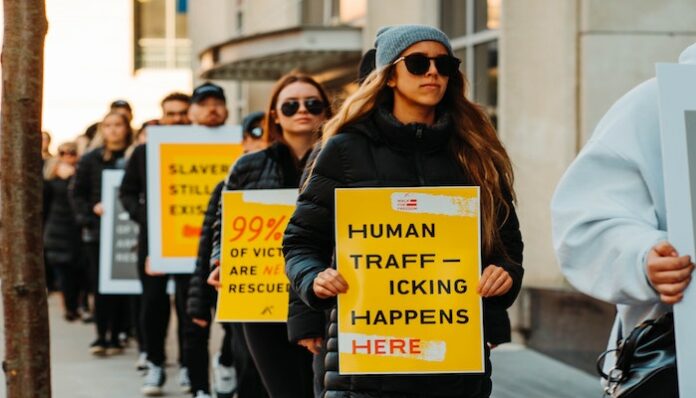
Human Trafficking Awareness Day (also known as Wear Blue Day) is January 11. Human Trafficking is a serious problem we face globally. There is education in awareness, which is why it is important to differentiate between fact and myth.
The Blue Campaign is an effort by the Department of Homeland Security (DHS) to educate the public and members of law enforcement on human trafficking facts and how we can come together to avoid it.
Some facts and information the DHS published are as follows:
- What is Human Trafficking? Human trafficking involves the use of force, fraud, or coercion in exchange for labor, services, or a commercial sex act.
- Human trafficking is an estimated $150 billion per year global industry.
- Human trafficking is a threat to U.S. public and personal safety, national
security, and economic prosperity.
What you can do to help: (resources for language translation are also available):
- Report suspected human trafficking by calling the HSI Tip Line at 1-866-347-2423.
- Get help from the National Human Trafficking Hotline by calling 1-888-373-7888 or texting HELP or INFO to 233733 (BEFREE).
Aside from the facts and steps we can take, it is important to recognize information circulating that may be untrue. Knowing the difference between truth and myth helps us be the best possible advocates for crimes involving human trafficking.
Below are some of the most common myths we see when it comes to information about trafficking from the National Human Trafficking Hotline:
- Human trafficking is almost always a violent crime.
- Trafficking often includes commercial sex.
- Only women and girls can be victims of human trafficking.
- People in trafficking situations are often held captive or unable to leave.
- Traffickers target victims they don’t know.
The Polaris Project goes into some further details of who may fall victim to human trafficking, plus other fact-based statistics:
- “Evidence suggests that people of color and LGBTQ+ people are more likely to be trafficked than other demographic groups.”
- “Survivors have taught us that traffickers expertly seek out people whose specific need they can fill – or pretend to fill. Sometimes they dangle material support – a good job, a safe place to stay, drugs. Often what they offer is less tangible but just as vital – the illusion of love, belonging, safety or acceptance.”
- “The best defenses against human trafficking are healthy families and strong communities.”
There is a huge source of defense we as a society can create when we are more aware of scenarios and potential “red flags” to indicate another party is in trouble. The Polaris Project offers an introductory course on human trafficking that can better equip individuals with awareness of potential concerns and how to handle them if and when they see something.
There are many resources available for people to educate themselves for free. Will you wear blue on January 11 as a symbol of solidarity? Let us know in the comments below!
Photo by Hermes Rivera on Unsplash


















